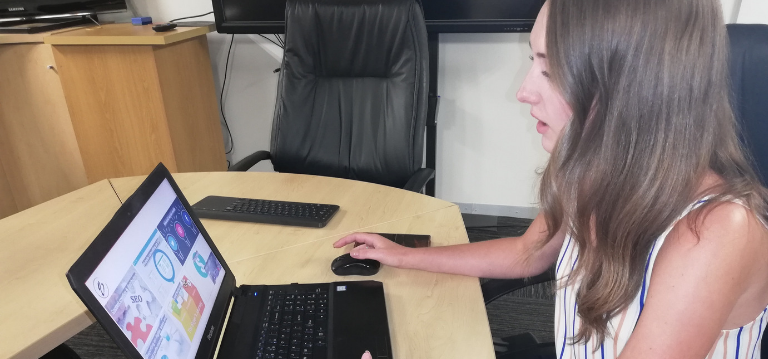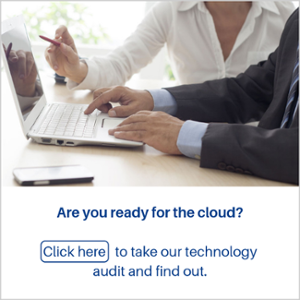New technology demands that organisations have user adoption strategies that will ensure success. Nashua Communications’ expert Adoption and Change Management (ACM) Team (Elmarie Turner, Charleen Howroyd and Kalindi Naidoo) talk us through this.
Change, by nature, is hard to implement. As a communications company, Nashua Communications has successfully helped organisations implement new collaboration technology and held their hands through the change. The benefits of evolving your technology is a given - what is often hard is doing it right. What a lot of organisations struggle with is finding the right technological solution for their specific needs. Furthermore, one of the biggest challenges to adopting new technology is moving staff from what they know and are comfortable with to something new.
Nonetheless, adopting new technology solutions is vital for your business to stay relevant. In this article, Nashua Communications’ ACM team talks us through the importance of having an adoption strategy. It can cost you more if you don’t have a good adoption strategy. It can also be costly if you start the adoption at the wrong time. For example, if you go in too late you’ll always be catching up.
Why is Nashua Communications a preferred technology adoption partner?
We’re not here to make a quick buck, we’re here to make sure this works and is implemented properly. All our efforts are directed towards helping and benefiting the customer at the end of the day. We also guide and coach management to make sure they lead and set the pace to follow on the change.
What’s important to know about user adoption?
Expectation is key - you need to make sure that people know what is happening, why things are being changed and what the goal is. People are very resistant to change. This is why adoption is so important. Adoption needs to kick off at the executive level. The buy-in has to start from the top, if mangement don’t adopt and adapt to the tech that they have invested in, why should others in the organisation?
Before technology adoption, what does the consultation phase entail?
Our consultation workshops give management a high-level adoption overview to make them aware of:
-
the value of adoption,
-
the different stages and phases in the adoption process,
-
what to expect from the Nashua Communications’ Adoption and Change Management Team; as well as what will be expected from the organisation’s side
The ultimate aim is to drive sustainable adoption and a return on their investment.
What does the entire user adoption process look like? Are there timelines or flow charts to help visualise it?
The adoption process can briefly be outlined as a well-planned strategy consisting of three stages:
Stage 1: (Plan) Preparing for Change
Stage 2: (Deliver) Managing Change
Stage 3: (Operate)Reinforcing Change
There are definite timelines, flow charts, communication plans, training plans, and so much more. All of this is covered in slide decks during workshops to help the sponsor and management visualise the process. Planning is vital, you can’t fit all of this into a short period. So make sure you are not rushing the process. If you rush the process you risk the adoption not getting done right. An assessment will be done before the quote to cater for the resulting timelines required.
Does the adoption process happen all at once, parallel to current technology or in phases?
As mentioned previously, there are many stages and phases within an adoption process. The adoption process needs to start ahead of the sales quote. If I may just point out for management to remember two very important facts:
-
It is not only technology that changes, the workforce and the way to inform or make the users aware of the change before hand is also a part of the change process.
-
Double check that adoption and change management is included in the quotation, to ensure that the change will be adopted and sustained to achieve a return on the investment.
Back to the adoption process:
Although the adoption process happens in stages and phases, it still needs to be planned so that it happens at the right time and in the correct manner, taking change concepts and the company culture into consideration.
How extensive is your training?
As mentioned above, it’s not only technology that changes but the way users are informed as well. In the same way, today’s training is not only about how to use the new technology but also about why the user should use it in their specific role, and what is in it for them.
Nashua Communications’ training is extensive because it’s an important phase to drive adoption. How extensive? We deliver training in many different forms:
-
Through awareness campaigns
-
Demonstrations
-
Online training
-
Hands-on workshops
Will Nashua Communications leave the client with training tools?
Yes, resources will be set up in an internal information portal. An internal customer support group will also be coached during the adoption to be able to:
-
Measure, assess, and mitigate adoption
-
Follow the coached strategy from start to finish on their own
-
Be able to coach and guide new staff to adopt this new technology, and the new way of working, communicating, and collaborating
It’s not about telling people they have to do something, it’s about giving them the insights on why it will help them and getting them excited about the benefits.
Are there after sales or after adoption services provided?
Yes, Nashua Communications provides after sales and maintenance as well as Managed Services. Change Management will fall under Managed Services.
What assistance can Nashua Communications provide in the review phase?
The review phase is the assessment or information gathering phase, which is the most important phase as this is where information is gathered to create a customised strategy which will drive adoption, productivity and save costs to achieve a return on the investment.
Nashua Communications works with a methodology of making people aware and creating a desire in them to give them the knowledge to want to use this tech by:
-
Repetition, can’t give the message just once. Continuously emphasising the importance, efficiency and effectiveness of adoption will eventually get through to the users.
-
Analysing data and seeing where there is resistance. We review the usage at each phase and make sure that we redo adoption if need be in places where we find resistance.
Do you have recommendations on how organisations can ensure employee engagement on adoption?
User adoption is serious but should also be a light, fun process. Create a champion team to advocate for the technology within the organisation. Only 9% of your workforce is usually engaged with the project. Most people in the organisation are not engaged and might not care about adoption. Keep in mind that people want to feel included. It’s not just about the business but about the employees as well. It’s about making them feel valued and part of the team. A key group to engage would be middle management and changing their mindset would be key so that they can lead by example on adoption.
“The people of the organisation take their cues from management. If the executives don’t adopt, the team won’t”, says Kalindi Naidoo, Solutions Architect at Nashua Communications.
When end users become more engaged this makes the business more productive. It’s not just about work, tech is for their personal benefit too. It makes their life easier. Remote working is becoming a thing and this will help them feel like they have something in place to make this easier especially when trying to find that work/life balance.
Adoption will have an effect on staff retention. Business suffers if people leave and people will leave if they feel like they don't know how to use the tools, what to use it for or that it’s being forced on them. Once we leave, the people left behind can show new people how to do it, this is our goal.
In the end, it doesn’t matter how good your technology is, if it isn’t adopted properly it won’t work. We have the experience and expertise to ensure technology adoption is done correctly from idea to implementation. Having expert opinion early on is crucial, so get in touch with our team.
DO YOU HAVE A QUESTION FOR OUR EXPERTS?
Fill in the form and we’ll try our best to answer them in the next “Ask an Expert” blog series.




